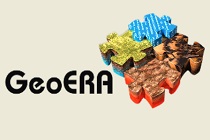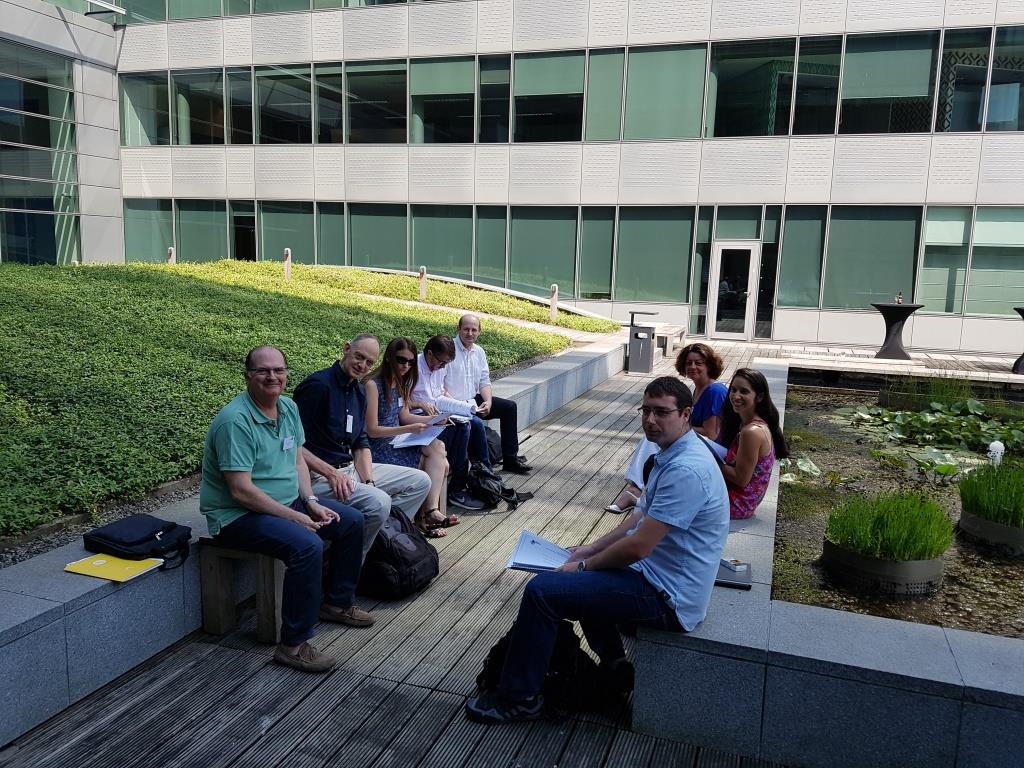 The kick-off meeting for the 15 projects under the European Geological Surveys Research Area (GeoERA) was held in Brussels from 3rd to 5th July 2018. GeoERA is a programme jointly run by the 48 European geological surveys that participate in the Geological Surveys of Europe (EuroGeoSurveys).
The kick-off meeting for the 15 projects under the European Geological Surveys Research Area (GeoERA) was held in Brussels from 3rd to 5th July 2018. GeoERA is a programme jointly run by the 48 European geological surveys that participate in the Geological Surveys of Europe (EuroGeoSurveys).
GeoERA was created under Regulation (EU) No. 1290/2013 of the European Parliament and of the Council of 11 December 2013 laying down the rules for participation and dissemination in Horizon 2020, which also funds the European Research Area Networks (ERA-NET). GeoERA aims to deepen cross-border and pan-European cooperation, harmonize existing geological data and develop common methodologies for solving contemporary challenges faced by the geosciences. The programme includes projects that address three themes: raw materials, groundwater and geo-energy. Their objective is to deliver geological information and tools to access data gathered by national geological surveys, in order to support responsible and sustainable use of the subsurface. Cooperation between the projects is expected both within and across the themes.
GeoERA coordinator Yvonne Schavemaker from TNO opened the meeting with a presentation on the main aims of the programme and its connection with policies of the European Commission and other European institutions. The project coordinators introduced their projects covering four themes:
- Raw materials,
- Groundwater,
- Geo-energy,
- Information platform.
After the introduction, the GeoERA Stakeholder Council explained their expectations and recommendations for each project. The subsequent presentations discussed the assessment of the potential impact of GeoERA on the functioning of the EU organisations and Member States. They also addressed the cooperation between the programme and other projects and research networks such as MIREU, EMODNET, KINDRA, SUBSOL and Network of Mining and Metallurgy Regions in EU, GKZ Freiberg.
The remaining two days were reserved for themed sessions and project consortia meetings.
The Polish Geological Institute – National Research Institute (PGI-NRI) iparticipates in one project under the raw materials theme (FRAME), two under the groundwater theme (HOVER and RESOURCE) and four under the geo-energy theme (HIKE, GeoConnec3d, MUSE and 3DGEO-EU). The PGI-NRI is also involved in the GeoERA Information Platform Project (GIP-P). It focuses on the IT support for preparation of a new platform for sharing the results of the programme. The projects that the PGI-NRI is involved in cover a wide range of contemporary problems:
- FRAME – Forecasting and Assessing Europe's Strategic Raw Materials Needs. FRAME focuses on delivering scientific information on strategic mineral resources (such as REE, Li, Co, Nb, Ta, graphite, In, Ga, V, Te, Se, Sb) in Europe. FRAME aims to create an innovative database that not only provides information on existing mineral resources, but also stores geological information relevant to their prospecting. It will require scientific research focused on broadening and exchanging knowledge about the distribution and origin of strategic and critical raw materials. The results will allow for coordinated and modern exploration of these mineral deposits across the geological regions of Europe (PGI-NRI coordination S. Mikulski).
- HOVER – Hydrological processes and Geological settings over Europe controlling dissolved geogenic and anthropogenic elements in groundwater of relevance to human health and the status of dependent ecosystems. The project will address issues associated with groundwater management, particularly related to groundwater quality, drinking water and its anthropogenic pollution. It will analyse aspects such as hydrogeochemical parameters of mineral, thermal and therapeutic water at the pan-European level, the susceptibility of aquifers to pollutants and the methods for monitoring of emerging organic contaminants (EOCs), such as pharmaceutical pollution, affecting groundwater quality (PGI-NRI coordination Agnieszka Felter, Anna Kuczyńska, Magdalena Nidental).
- RESOURCE - Resources of groundwater harmonized at the cross-border and pan-European scale. The project focuses on groundwater resources and the depth of aquifers at the pan-European level, including harmonization of hydrogeological data from the participating countries (PGI-NRI coordination Tomasz Gidziński and Agnieszka Piasecka). One important aspect is the modelling of groundwater flow across administrative boundaries. During the meeting, Tomasz Gidziński presented the aim and scope of TRANSFLUX, a numerical model covering the aquifer at the Polish-Lithuanian border . The study was carried out as Work Package 4 of GeoERA’s Harmonization of Groundwater Resource. Discussion about the project implementation and the future application of its results continued after the talk. The following four case studies were highlighted during the RESOURCE meeting: H3O+ (Roer Valley Graben), TRANSFLUX, Karst and Chalk and Pan-EU Resources.
- HIKE – Hazard and Impact Knowledge for Europe aims to assess geoenvironmental threats such as seismic events, mass movements, and gas and fluid migration in relation to the use of subsurface resources, including the capacity for fuel and energy storage across Europe. Various case studies will be analysed in order to take into account different conditions and patterns of subsurface use. The aim of the project is to harmonize data and develop common methodologies and workflows to exchange information between the national geological surveys and relevant stakeholder groups (PGI-NRI coordination - Olga Lipińska, Monika Konieczyńska).
- GeoConnect3d – Cross-border, cross-thematic multi-scale framework for combining geological models and data for resource appraisal and policy support. The aim is to prepare and test, using regional case studies, a novel methodology for the acquisition and dissemination of geological data, which would facilitate the planning of subsurface use and its sustainable management. Structural framework models will be developed and annotated with geomanifestations that are specific expressions of geological processes delivering important geological information. This new approach should take into account the different needs of stakeholder groups, which will be established i.a. with use of social media. The results will be presented to stakeholders’ representatives at an international conference concluding the project (PGI-NRI coordination Monika Konieczyńska, Joanna Fajfer). The implementation of the project can be followed on social media.
- MUSE – Managing Urban Shallow geothermal Energy. The project is concerned with shallow geothermal energy, including conflicts that may arise due to its use in urban areas in Europe. These factors will be assessed in order to develop management strategies that take into account efficient planning of geothermal energy use and monitor its environmental impact. The results will be applied in various ways, including urban planning and national plans for renewable energy (PGI-NRI coordination Maciej Kłonowski).
- 3DGEO-EU – 3D Geomodeling for Europe aims to develop and test workflows for the unification of geological data interpretation and to harmonize and validate the 3D geological models created so far in various European countries based on national interpretation schemes. The project uses three cross-border pilot areas, and one of them is located in the northern part of the Polish-German border. The 3D geological models of the German Basin and the model of the Gorzow Block, currently developed by the PGI-NRI, will be harmonized first. In the next stage, the model of the Szczecin Basin will be included as well (PGI-NRI coordination Ewa Szynkaruk).
- GIP-P – GeoERA Information Platform Project is designed to provide technical support for databases that will store information delivered by the GeoERA projects. The existing platform of the European Geological Data Infrastructure (EGDI) will be used as a starting point to develop new tools for the visualisation of project results (PGI-NRI coordination Paweł Lewandowski).

Meeting of the MUSE project, photo Gregor Goetzl
Text: Monika Konieczyńska and the GeoERA team
Translated by Tomasz Żuk














 PGI-NRI offer
PGI-NRI offer Mineral resources of Poland
Mineral resources of Poland  Oil and Gas in Poland
Oil and Gas in Poland 




 Subscribe to RSS Feed
Subscribe to RSS Feed